When Paris Sizzled
When Paris Sizzled
The 1920s Paris of Hemingway, Chanel, Cocteau, Cole Porter, Josephine Baker, and Their Friends
Mary McAuliffe
Rowman & Littlefield
Lanham Boulder New York London
Published by Rowman & Littlefield
A wholly owned subsidiary of The Rowman & Littlefield Publishing Group, Inc.
4501 Forbes Boulevard, Suite 200, Lanham, Maryland 20706
www.rowman.com
Unit A, Whitacre Mews, 26-34 Stannary Street, London SE11 4AB, United Kingdom
Distributed by NATIONAL BOOK NETWORK
Copyright 2016 by Mary S. McAuliffe
When not otherwise noted, all translations are by the author.
All rights reserved . No part of this book may be reproduced in any form or by any electronic or mechanical means, including information storage and retrieval systems, without written permission from the publisher, except by a reviewer who may quote passages in a review.
British Library Cataloguing in Publication Information Available
Library of Congress Cataloging-in-Publication Data
Names: McAuliffe, Mary Sperling, 1943 author.
Title: When Paris sizzled : the 1920s Paris of Hemingway, Chanel, Cocteau, Cole Porter, Josephine Baker, and their friends / Mary McAuliffe.
Description: Lanham : Rowman & Littlefield, [2016] | Includes bibliographical references and index.
Identifiers: LCCN 2016017189 (print) | LCCN 2016019010 (ebook) | ISBN 9781442253322 (cloth : alkaline paper) | ISBN 9781442253339 (electronic)
Subjects: LCSH: Paris (France)Intellectual life20th century. | IntellectualsFranceParisHistory20th century. | ArtistsFranceParisHistory20th century. | AuthorsFranceParisHistory20th century. | ArtsFranceParisHistory20th century. | Social changeFranceParisHistory20th century. | World War, 19141918Influence. | Paris (France)Social life and customs20th century. | Paris (France)Biography.
Classification: LCC DC737 .M35 2016 (print) | LCC DC737 (ebook) | DDC 944/.3610815dc23
LC record available at https://lccn.loc.gov/2016017189
 The paper used in this publication meets the minimum requirements of American National Standard for Information SciencesPermanence of Paper for Printed Library Materials, ANSI/NISO Z39.48-1992.
The paper used in this publication meets the minimum requirements of American National Standard for Information SciencesPermanence of Paper for Printed Library Materials, ANSI/NISO Z39.48-1992.
Printed in the United States of America
In memory of
Saville and Anita
dear friends and mentors

Acknowledgments
A s I reflect on the years I have spent writing about Paris, especially about the Belle Epoque and now les Annes folles , I am more than ever grateful for those friends and mentors who, over the years, have shared with me their knowledge and love of history, art, architecture, and music. High on this list are Saville and Anita Davis, to whom this book is dedicated. By their enthusiasm and example, they encouraged me to follow, at least in part, along some of the same paths that so enriched their lives and the lives of those around them.
Many of these friends, sadly, are now deceased, and I miss them greatly, but I hope that by exploring Paris during the culturally rich years of the Third Republic, including the Belle Epoque and the period between the two world wars, that I have in some measure expressed my thanks for their encouragement and guidance.
In addition, I would like to thank the New York Public Library for providing me a place in its Wertheim Study Room, a sanctuary for scholars within its vast research facilities. I am also indebted to those research librarians in the NYPLs Art and Architecture division as well as in its Library for the Performing Arts for their ever-ready assistance.
During the past several years, I have been blessed by the guidance of my editor at Rowman & Littlefield, Susan McEachern, who has shepherded four books, including this one, into publication. Her knowledge, judgment, and taste have made a difficult task easier and far more rewarding. I have also been fortunate in once again having Jehanne Schweitzer as my expert production editor, smoothing out the variety of bumps that can crop up along the way to publication. My thanks as well to assistant editor Audra Figgins for her assistance in leading me through the complex publication process.
As always, my deepest thanks to my ever-supportive family, especially to my husband, whose beautiful photos enhance these pages, and without whose enthusiastic support this book would not be possible.

Introduction
T he Twenties, or the Roaring Twenties, as they are known in America, had a distinctive name in Paris les Annes folles , or, roughly translated, the Crazy Years. This era began after the wars end, in late 1918, and continued through the decade, until brought to a halt by the Wall Street crash of 1929 and subsequent worldwide depression.
These years, stretching scarcely over a decade, saw great change on almost every front, from art and architecture to music, literature, fashion, entertainment, transportation, and, perhaps most notably, behavior. Most of what appeared at the time to be revolutionary had roots that went back to the war or even the prewar years, but these trends fully floweredand drew the most noticeduring the postwar decade.
Readers of my previous books on Paris Dawn of the Belle Epoque and Twilight of the Belle Epoque will recognize many of the cast of characters, including Gertrude Stein, Marie Curie, Jean Cocteau, Picasso, Stravinsky, Diaghilev, and Proust, as well as Clemenceau, Sarah Bernhardt, and Claude Monet. But others now make their appearance, most notably Ernest Hemingway, Coco Chanel, Cole Porter, Josephine Baker, and Le Corbusier, in addition to Jean Renoir, Man Ray, Sylvia Beach, James Joyce, and Kiki, the famed Queen of Montparnasse.
Photography and cinema were the new vehicles for artistic expression during these vibrant years, but the eras innovative spirit also fostered the more traditional art forms as well as high-decibel factories run by entrepreneurs such as Andr Citron, Louis Renault, and the Michelin brothers. The hard metallic clang of the assembly line and the roar of automobile traffic were reflected in the clean-edged and streamlined forms of Art Deco, while architects such as Le Corbusier found inspiration in the new gods of machinery, industrialization, and technology.
The epicenter of all this creativity, as well as of the eras good times, was that unsightly quarter known as Montparnasse. There, impoverished artists and writers found colleagues and cafs, while tourists discovered, at least for a night or two, the wild escapades of their dreams. A swelling population of expats, dubbed the Lost Generation, either found themselves or became permanently mired in a haze of fantasy and booze. Escapism and creativity mingled for a decade in this fizzy atmosphere, until the tourists vastly outnumbered the locals and the party came to an end.
Throughout the decade, the sheer hedonism of those with money and leisure contrasted starkly with the many who, in the wars aftermath, struggled to rebuild their lives. And, in an ominous counterpoint to the new in all its forms, including hairstyles, hemlines, and women in the workplace, gangs and armies of the extreme right emerged, seething with righteous indignation.
Rather than a decade of unmitigated bliss, les Annes folles thus encompassed a striking degree of tension, a combustible mixture that produced not only a remarkable surge of creativity but also a ruthless attempt to annihilate whatever threatened tradition and ordera battle that would only escalate in the decade that followed.
Next page
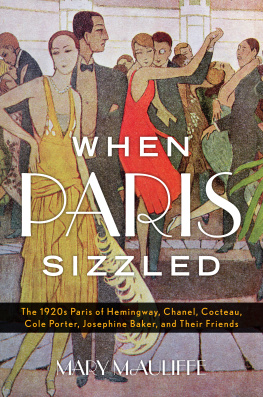
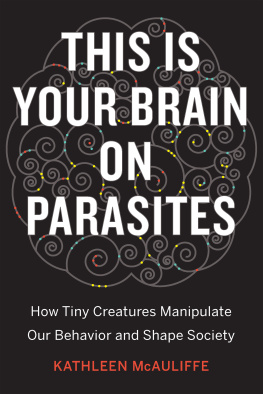

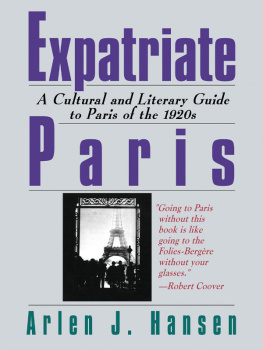
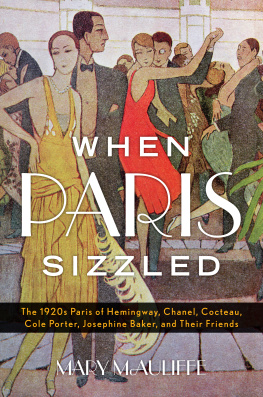
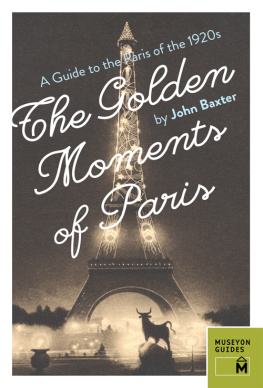

 The paper used in this publication meets the minimum requirements of American National Standard for Information SciencesPermanence of Paper for Printed Library Materials, ANSI/NISO Z39.48-1992.
The paper used in this publication meets the minimum requirements of American National Standard for Information SciencesPermanence of Paper for Printed Library Materials, ANSI/NISO Z39.48-1992.